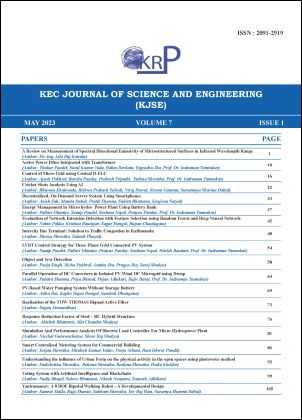Active Power Filter Integrated with Transformer
DOI:
https://doi.org/10.3126/kjse.v7i1.60511Keywords:
Shunt active filter (SHAF), Power Quality, Skin effects, Proximity effect, Harmonic Component, Non-linear LoadAbstract
In recent years, the use of non-linear load is increasing day by day. Non-linear loads such as traditional diode/ thyristor rectifiers with inductive load generate harmonic and reactive current, which leads to poor power factor, low energy efficiency, and harmful disturbance to other appliances. Also, in recent years, the large-scale use of the power electronic equipment has led to an increase of harmonics in the power system. Harmonics also affects on the performance of distribution transformer. It increases power loss due to skin effect and proximity effect. Current harmonics are one of the most common causes of these problems and are usually resolved by using shunt active filter (SHAF). By the implementation of a shunt active power filter on the secondary side of the transformer, the harmonics can be compensated which is produced by non-linear load. Finally, by the implementation of this concept the efficiency of the transformer, losses of the transformer, overheating of the conductor due to skin effect, power quality, etc. can be improved. Results of simulation and hardware fabrication are presented in this paper.




